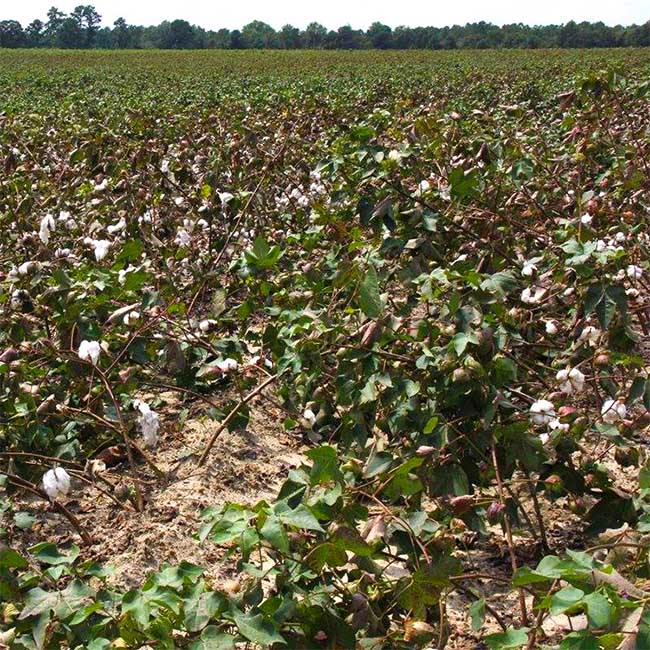Ag News
Corn, cotton, soybean production forecasts down from September
Posted on Oct 19, 2017 at 0:00 AM
After Tropical Storm Irma blew through in mid-September causing widespread crop and farm asset damage across Georgia, the USDA's National Agricultural Statistics Service (NASS) October Crop Production Report forecasts significantly lower production in Georgia's production of corn, cotton and soybeans than the agency previously predicted.
NASS projected Georgia's corn production at 46 million bushels, down from its prediction of 58.24 million bushels in its September Crop Production Report, a decline of 21 percent. The state's projected 2017 corn production would also be an 18 percent decline from its 2016 production (56.1 million bushels).
NASS adjusted its projection for the state's cotton production from 2.7 million bales in the September report to 2.4 million in the October report. A 2.4 million-bale crop in 2017 would still be an increase of 220,000 bales (10 percent) over the 2016 production of 2.18 million bales.
Georgia's 2017 peanut crop projection remained the same from September to October, at 3.9 billion pounds, a 41 percent increase over the 2016 crop of 2.753 billion pounds.

In the October report, NASS projects Georgia's soybean production at 6.53 million bushels, a 12 percent decrease from the forecast crop of 7.48 million bushels included in the September report. The October forecast soybean crop would also be a 9 percent decline from the 2016 crop of 7.2 million bushels.
NASS forecast a 25 million-pound crop of tobacco in Georgia in 2017, the same as in the September report and 12 percent below the 2016 crop of 28.35 million pounds.
NASS had no forecast in the September report for hay or pecans. Georgia's hay production is expected to be 1.68 million tons, a 22 percent increase over the 2016 crop of 1.38 million tons. The state's pecan crop, which was hit hard by Irma, was forecast at 81 million pounds, down fro 109 million pounds in 2016, which would be 26 percent decline.
- Categories:
- Tags: